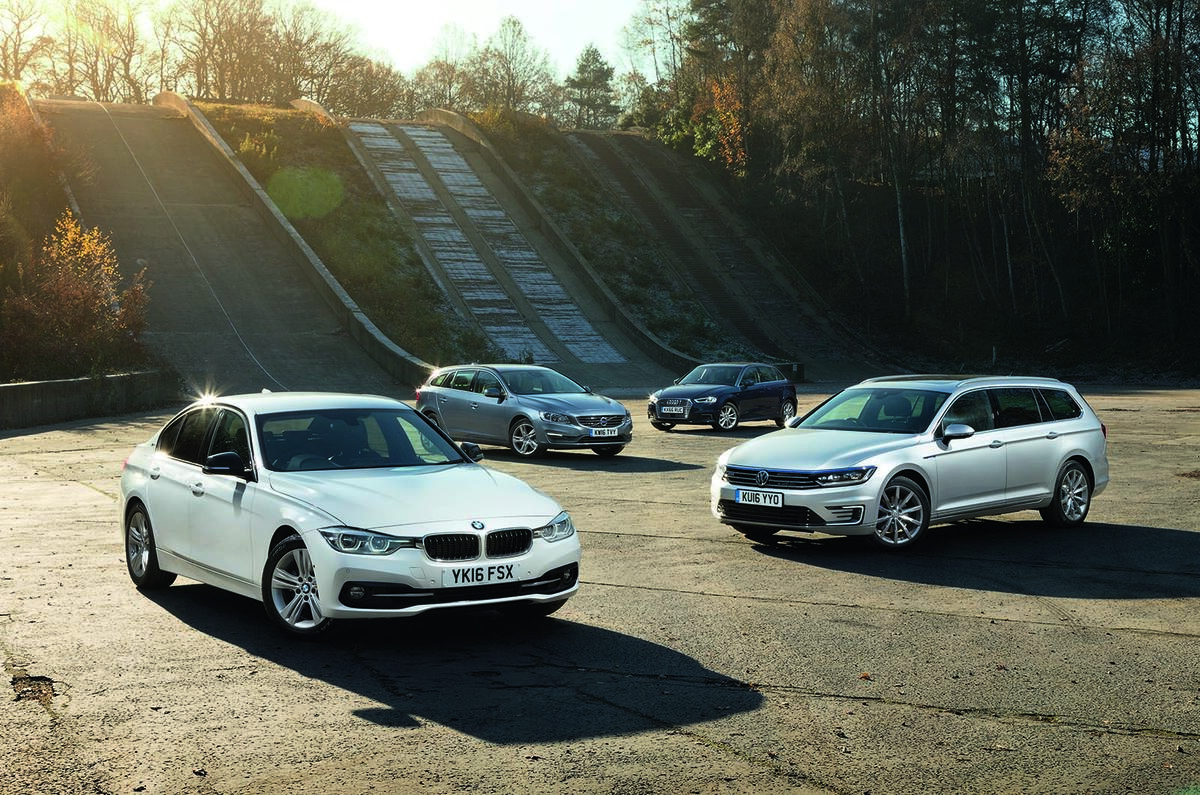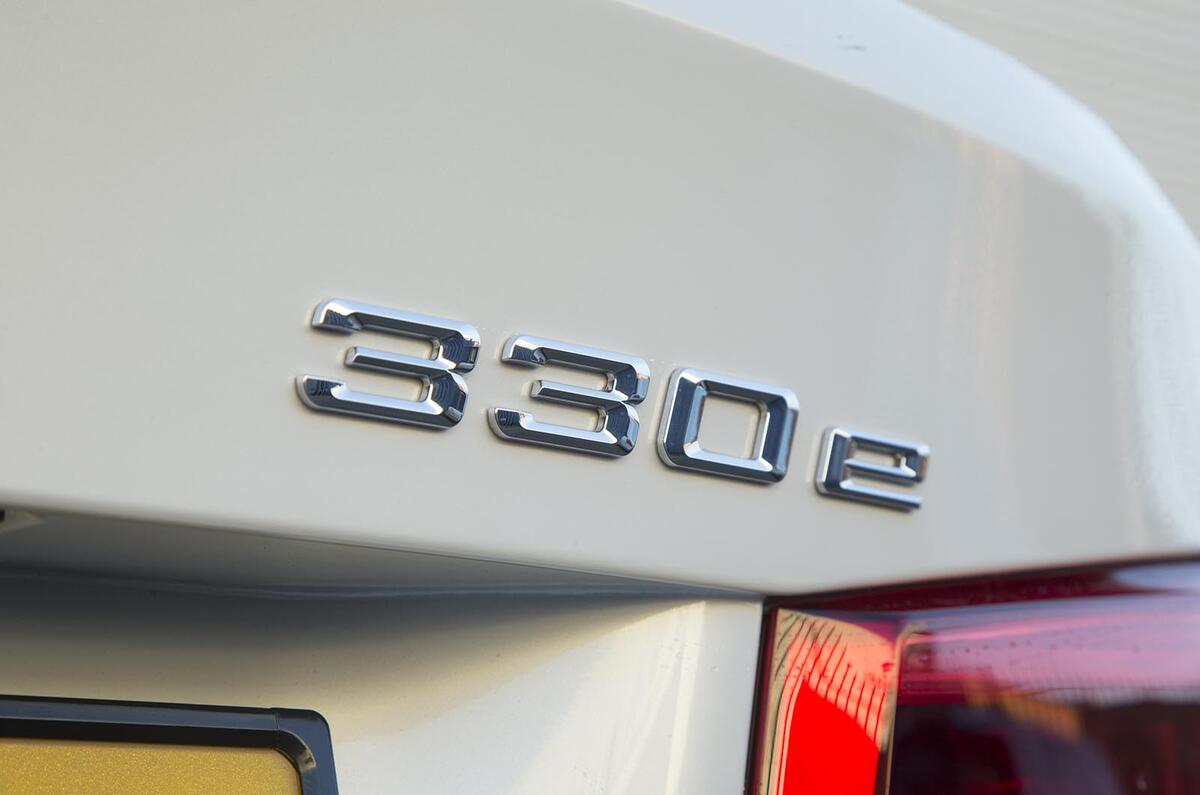Which is the best sub £40k plug-in hybrid - the BMW 330e, Audi A3 Sportback e-tron, Volkswagen Passat GTE Estate or Volvo V60 D5 Twin Engine? We test them all...
The past couple of years have been long ones in the world of plug-in hybrid executive cars.
But now that they’ve survived the awkward years, when all they delivered was a gimmicky tax break to the occasional company boss who probably didn’t need one, these petrol-electric and diesel-electric curios have begun to mature more rapidly than a pubescent teenager after a hormone injection. These electrified hatchbacks, saloons, SUVs and estates are now numerous enough to be spotted on most UK motorway journeys, well known enough to make only slightly geeky dinner party conversation (which my salmon en croute more than makes up for, by the way) and cheap enough to make an appealing alternative to a higher-level conventional petrol or diesel-engined car.
All they need to be now is ‘better’: quicker, smoother, more efficient, more refined, more engaging to drive and easier to use than their simpler piston-engined counterparts. And not just in the brochure or the notoriously unrepresentative EU laboratory emissions test, but also out in the real world. Because technology can always be relied upon to win through when it makes a better car.
So are we there yet? After the past couple of days, spent in the company of the latest sub-£40k plug-in hybrids from Audi, BMW, Volkswagen and Volvo, we’ll provide an answer to that question over the next few pages. Those two days involved lots of back-to-back urban and motorway mileage, plenty of charging and zero-emissions running, a fair bit of real-world economy testing and some good old-fashioned hard road driving in between.
The cars involved – chosen to make as fair a comparison as possible but also to show the choice that already exists in a market to which many remain ignorant – include a five-door hatchback, a four-door saloon and two mid-sized estate cars. The Audi A3 Sportback e-tron brings the lowest CO2 emissions and kerb weight to our proceedings, not so coincidentally also being the smallest car on test. The Volkswagen Passat GTE Estate is the newest and has the most powerful electric motor of the group, as well as the biggest boot. The Volvo V60 D5 Twin Engine bucks emerging mechanical type with its five-cylinder diesel combustion engine and self-contained electric rear axle. Finally, the BMW 330e keeps things simple, with an electric motor where its torque converter would otherwise be and the smallest drive battery of the four.

















































































Join the debate
Add your comment
indicated mpg vs. evaluation with one full tank
indicated vs true mpg
We do plenty of brim to brim validation. When we do, we almost always find modern trip computers to be better than 90 per cent accurate - which, when you consider that their instruments still tend to under-read by 5-10 per cent, is about as accurate as they can be.
MS
Agree with majority
Informative
This review is the first time that I think that day might have come....and gone.
Its nice that Autocar have returned to useful news.